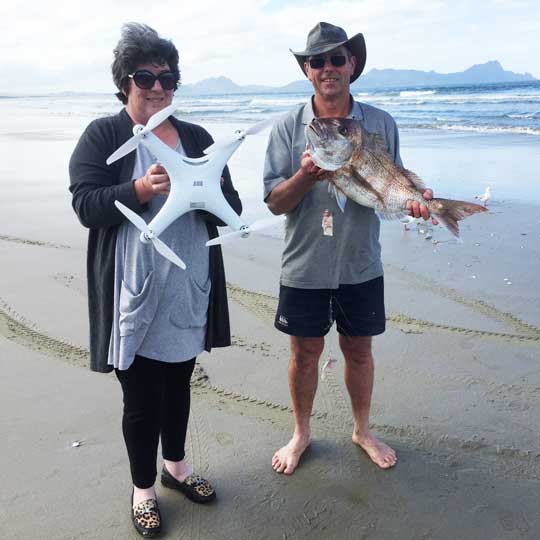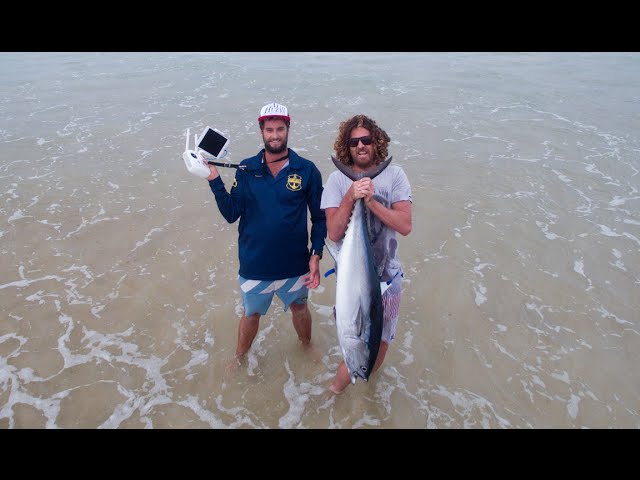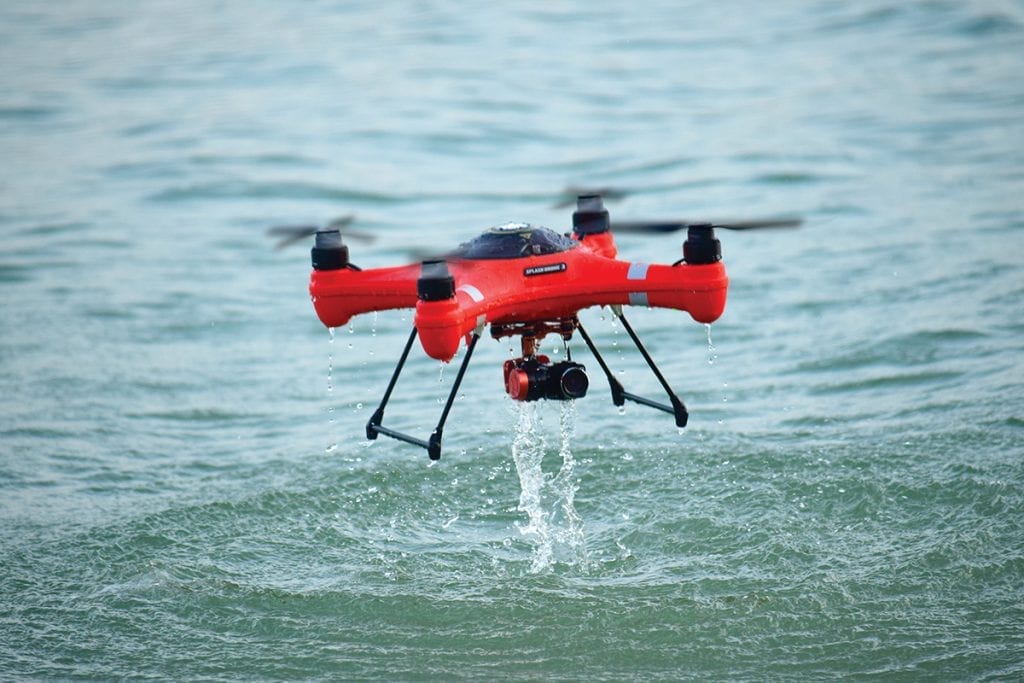
In this article, we'll look at the basics of a drone fishing rig. We'll also be discussing what to consider when choosing your drone, how to charge it, and the payload. Then we'll show you how to get more out of your drone. For more tips and tricks, read on. Soon you will have the drone of dreams! Let's get !... going and maybe even catch a few more fish!
Basic drone fishing rig
The first thing you will need to drone fish is a set of hooks. You should double the fishing line and use mono or braid. A Cat's Paw Loop or Uni knot should be tied to the fishing line. You'll also need a sinker between 2-8 ounces and hooks for attaching to each second section of your backbone. Finally, you will need to attach the lead loop of a snap swivel and end loop of your drone.
There are many methods to make a fishing helicopter. A basic one involves attaching a hook to the landing gear of the drone and spinning it until the line releases. Droppers and drop lines can be used to keep the fishing net below the drone. A dropper allows you to keep the main line below the drone without getting tangled with the propellers. Accessories such as docks and batteries can be added to fishing drones.
Once you have the basic drone fisherman rig purchased, you will need additional equipment. A long fishing line (approximately 700m) and a bait-dropping device are essential. These are optional extras but will make your drone fishing trip more enjoyable. A drone can give you a better view of the surroundings and help you spot fish easier.

Payload for drone fishing equipment
Be aware of safety precautions if you want to catch fish by drone. Avoid flying your drone in strong wind or rain. Here are some suggestions:
First, ensure that your drone can carry a lot of weight. It won't be stable if loaded with braided rope or heavy lures. If you are fishing near the seaside, wind can blow the drone off course. It's also important to check local regulations and laws, as some may not allow fishing from a drone. Once you've decided to go fishing with a drone, you need to choose one with solid carrying capacity.
Next is to determine what accessories you will need to mount to your drone. To minimize the problems of weight distribution, it's a good rule to use a rigging that has a central connection point. The most suitable attachment points are the motor struts, landing gear, and legs of the drone. Payloads attached to the camera and/or gimbal can cause damage. The easiest solution is to tie some fishing line along the length from one corner to another. To stop the line from falling out, you can attach tape to it.
Battery life for drone fishing rig
Before going out fishing with your drone, be sure to check the batteries and the other gear. This will prevent your drone from running low on battery life, and you can focus on fishing instead. You may be able to charge your drones using solar panels or batteries from your car. It is a good idea to start with fully charged batteries. This will make sure your drone is ready when you arrive at your fishing spot.

It is also important to take into account the drone’s flight time. There are some models that have longer flight time than others. However, a drone with a flight time of twenty-two minutes is sufficient to get the job done. This is great if you're looking to spend hours on the water with your drone. However, a drone that is not able to sustain long distances will render it inoperable. This will make it almost impossible to catch fish.
After setting up your fishing rod, attach the fishing clip to the drone's legs or motor struts. Next, attach the bait line to the fishing line. When you are ready to drop your bait, make sure you lock the reel. The tension will build when you pull the line out and let the drone drop the bait into the water. The battery may not work properly if it isn't charged after each use.
FAQ
What laws are there regarding drones flying?
The Federal Aviation Administration (FAA), in the United States, regulates all aspects related to drone operations. A certificate issued by the FAA is required to commercially operate a drone. First, you need to take a course about piloting and pass an exam. You will then need to pay an agency fee.
Is it safe to drive while flying a drone?
Driving a drone is dangerous, as it could cause an accident or crash into another vehicle. You also risk hitting pedestrians or other animals. Your car could be damaged if it hits power lines or trees.
Are drones permitted at public events?
As long as you comply with the rules, drones can be flown anywhere. If you intend to fly your drone at a public event, such as a parade or festival, you will need permission from the organizers.
Statistics
- With the top 10% making over $100/h and the bottom 10% making as low as $10/h. (dronesgator.com)
- According to Indeed, a drone pilot gets paid $25.73 per hour on average in the US. (dronesgator.com)
- According to the multiple listing service (MLS), houses and apartments with drone photographs are up to 68 percent more likely to sell than those without pictures. (thedroneu.com)
External Links
How To
How to Fly Drones at a Beginning Level
A drone is an unmanned aerial vehicle that can be remotely controlled and used for surveillance, aerial photography, film production, research, and other hobby purposes. The technology behind drones has been around since World War II. DJI's Phantom series of quadcopters was the first to be commercially used. There have been many types of drones since then, including beginner-friendly drones like the Parrot AR Drone 2.0 and professional-grade multi-rotor crafts like the DJI Mavic Pro.
There are many ways to fly a drone.
-
Remote control: This uses a remote control device that attaches to your hand and allows you control the drone along its flight path. There are two main types, On/Off switches (like radios) and joysticks.
-
Manual Control - Using a smartphone app, this method allows users to remotely operate the drone via GPS coordinates. The app will give you instructions.
-
Autonomous Flying - This allows the drone to take over all of the piloting duties. It allows the drone to fly independently without any human intervention. It must have a builtin camera, sensors capable of taking images and data to enable autonomous flight.
-
Triggered Flight - This method is similar to manual control, except the pilot manually sets up a preprogrammed route, and the drone follows that route until it reaches the endpoint. After the program is complete, the drone automatically returns to the ground.
-
Landing Gear – Some drones are equipped with landing gear, which allows them to safely land if they lose power during flight.
-
Goggles - Pilots may wear goggles to shield themselves from flying debris.
-
Camera - Some drones are equipped with cameras allowing you to capture photos and videos from above.
-
Obstacles-Some drones come with obstacle avoidance devices that keep them from hitting obstructions.
-
Speed - Some drones can reach speeds of over 40 mph.
-
Battery Life - Most drones can last between 20 minutes to 3 hours, depending on how much power you're using.
-
Range - Depending on the model, some drones can travel up to 30 miles away.
-
Power source - Not all drones can use an external power source. Others can run on internal batteries.
-
Weight - Some drones are lighter than others, while some models can weigh as much as 4 pounds.
-
Size - Drones come in many sizes, from small gadgets that fit in one's hands to large craft that weigh more than 50 lbs.
-
Price - Drones come in a variety of price categories, including high-end models which can run into the thousands and low-cost options that can start at $100.